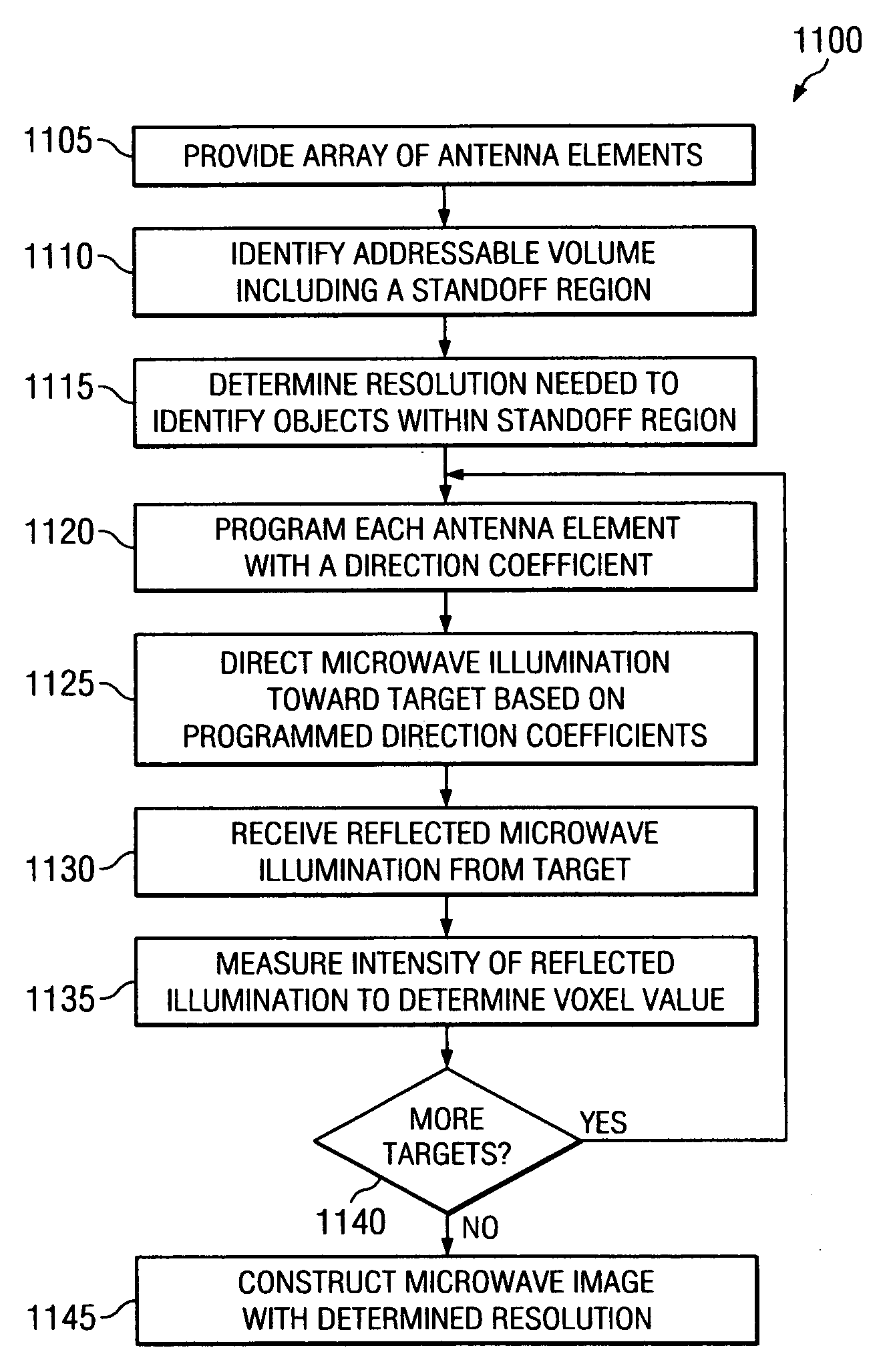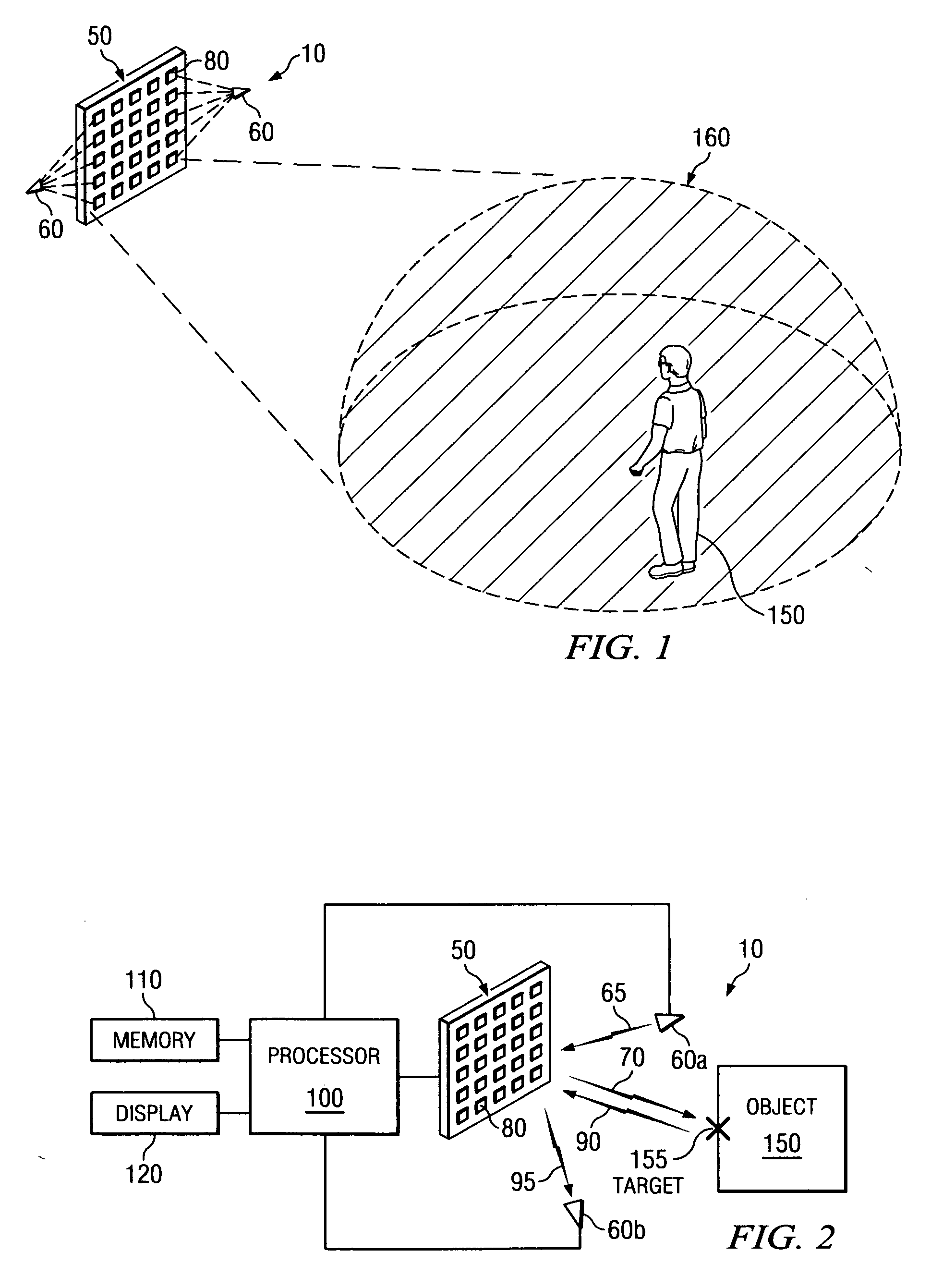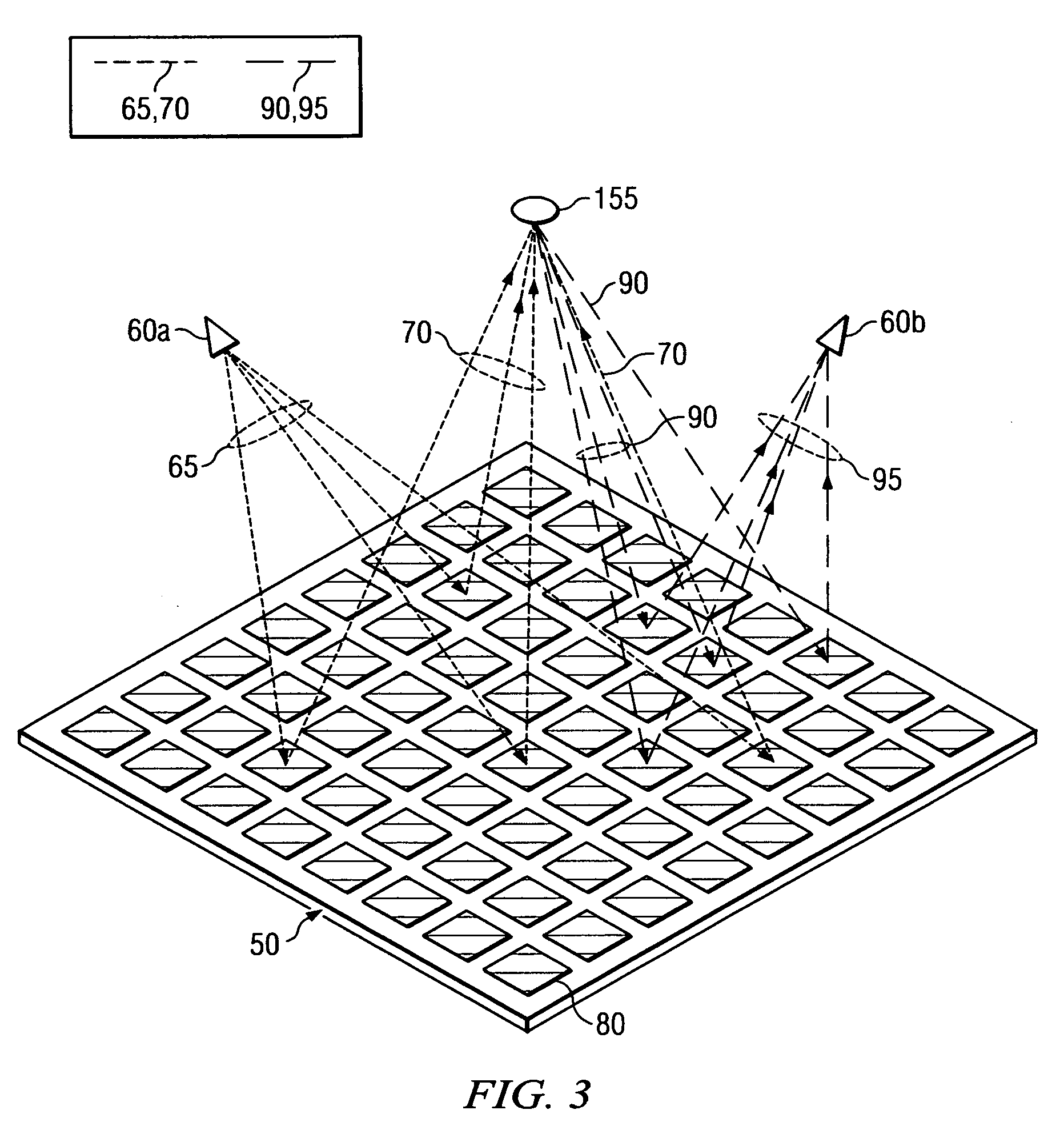System and method for standoff microwave imaging
a standoff microwave and imaging technology, applied in the field of standoff microwave imaging, can solve the problems of inability to identify concealed weapons or other contraband, limited sensitivity of digital cameras, and inability to image opaque or concealed objects, etc., to achieve the effect of reducing the volume and reducing the number of voxels in the imag
- Summary
- Abstract
- Description
- Claims
- Application Information
AI Technical Summary
Benefits of technology
Problems solved by technology
Method used
Image
Examples
Embodiment Construction
[0026] As used herein, the terms microwave radiation and microwave illumination each refer to the band of electromagnetic radiation having wavelengths between 0.3 mm and 30 cm, corresponding to frequencies of about 1 GHz to about 1,000 GHz. Thus, the terms microwave radiation and microwave illumination each include traditional microwave radiation, as well as what is commonly known as millimeter wave radiation. In addition, as used herein, the term “microwave imaging system” refers to an imaging system operating in the microwave frequency range, and the resulting images obtained by the microwave imaging system are referred to herein as “microwave images.” Furthermore, as used herein, the term “standoff” refers to a distance between an imaging device and an object that is approximately equal to or greater than nine feet. In exemplary embodiments, the term “standoff” refers to a distance between an imaging device and an object of between 9 feet and 450 feet.
[0027] Referring now to FIG...
PUM
 Login to View More
Login to View More Abstract
Description
Claims
Application Information
 Login to View More
Login to View More - R&D
- Intellectual Property
- Life Sciences
- Materials
- Tech Scout
- Unparalleled Data Quality
- Higher Quality Content
- 60% Fewer Hallucinations
Browse by: Latest US Patents, China's latest patents, Technical Efficacy Thesaurus, Application Domain, Technology Topic, Popular Technical Reports.
© 2025 PatSnap. All rights reserved.Legal|Privacy policy|Modern Slavery Act Transparency Statement|Sitemap|About US| Contact US: help@patsnap.com



